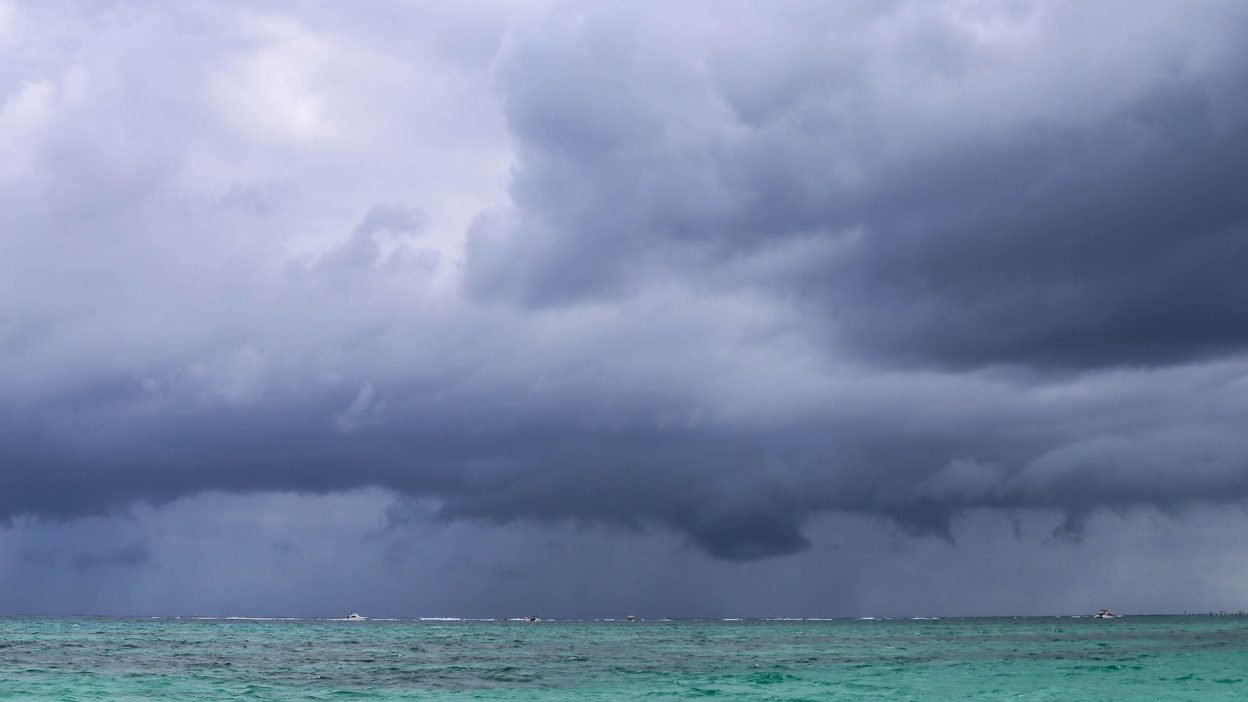A Devastating Wake-Up Call That Shook The Nation
In 1964, Vietnam faced one of its most destructive tropical storms—Tropical Storm Joan. This powerful storm hit unexpectedly, leaving a trail of devastation and tragic loss of life. At the time, Vietnam had little experience with such extreme weather events, and the lack of early warnings left the nation vulnerable. The sheer force of the storm, coupled with the limited preparedness, caused widespread panic and confusion.
The aftermath of the storm revealed the nation’s vulnerability. With inadequate disaster response systems and insufficient infrastructure, Vietnam struggled to cope with the extent of the damage. The impact of Tropical Storm Joan served as a grim reminder that nature’s wrath cannot be underestimated, and Vietnam had not yet developed the systems to handle such crises. The disaster would go on to shape how the country approached future natural calamities.
Tropical Storm Joan’s Legacy: A Country Devastated by Nature’s Fury
The toll left by Tropical Storm Joan was enormous. Entire villages and towns were destroyed, with homes flattened, and lives uprooted. The combination of strong winds and extensive flooding crippled the country, leaving behind a legacy of suffering. The people of Vietnam faced months of recovery, and the country’s resources were stretched thin as it attempted to rebuild.
Despite receiving international aid, Vietnam’s recovery efforts were slow. The vast destruction and lack of an effective disaster response system meant that it took years to restore what had been lost. The storm exposed severe gaps in Vietnam’s infrastructure, highlighting the urgent need for improvements in disaster management.
The Human Cost: Deaths, Injuries, and Destruction from Tropical Storm Joan
- Devastation of Over 100,000 Homes
Tropical Storm Joan caused widespread flooding and high winds that obliterated over 100,000 homes. Many rural areas were submerged, and families were left without shelter. The long process of rebuilding began, but it was clear that the storm had dealt a heavy blow to the country’s housing infrastructure. - Death Toll: Over [Death Toll] Lives Lost
It is believed that the storm claimed more than [Death Toll] lives, with many others suffering injuries. The storm’s destructive winds, torrential rain, and collapsing buildings were the main causes of death and injury. Thousands of people were left traumatised and physically scarred by the experience. - Economic Havoc: Vietnam’s Struggle to Recover
Beyond the human cost, Tropical Storm Joan wreaked havoc on Vietnam’s economy. Agriculture, a critical sector, was hit hardest, with crops destroyed, livestock lost, and fields submerged. Infrastructural damage, including roads, bridges, and public buildings, left the country facing severe economic setbacks. The recovery would take years, with Vietnam’s economy struggling to return to normal.
Tropical Storm Joan’s Wake: A Crisis of Mismanagement and Neglect
One of the main reasons for the scale of the disaster was the government’s failure to act quickly. Despite some early warnings about the storm’s path, there were delays in issuing proper alerts to the public. As a result, many people were unprepared when Joan struck, unable to evacuate or secure their homes.
The country’s infrastructure at the time was ill-equipped to withstand such a storm. Roads were easily washed away, and communication systems broke down, hindering rescue operations. Relief efforts were delayed as many parts of the country were cut off from assistance, leaving citizens stranded. This event became a stark reminder of how inadequate preparations and management can escalate the damage caused by a natural disaster.
What Made Tropical Storm Joan So Lethal? Exploring the Causes
Several factors contributed to the extreme severity of Tropical Storm Joan. The storm developed during a period of heightened tropical activity, making it more powerful than expected. Its unpredictable course and rapid intensification caught both meteorologists and the public off guard, increasing the scale of the disaster.
- Erratic Path and Unpredictable Intensity
Joan’s movement was erratic, and its course veered off traditional storm paths. This unpredictability made it difficult to predict its landfall and intensity, giving little time for evacuation or preparation. As the storm intensified rapidly, it hit Vietnam with a force that few were ready for. - Global Warming’s Possible Influence
Discussions on global warming suggest that warmer sea temperatures may have intensified storms like Joan. While there was no scientific proof at the time, the increased intensity of such storms has been linked to global climate changes. This theory has gained more attention in recent years as weather patterns continue to change globally.
Vietnam’s Unpreparedness: How Tropical Storm Joan Exposed Our Vulnerabilities
- Absence of a Reliable Warning System
At the time, Vietnam lacked a robust early warning system. Many people were caught by surprise, as there was little to no official warning before the storm’s landfall. Early alerts could have provided people the chance to evacuate and prepare, saving countless lives. - How Vulnerable Communities Were Left to Fend for Themselves
Rural and remote areas were especially vulnerable to the storm’s impacts. Many of these communities lived in poorly built homes that could not withstand the storm’s fury. Without any support or evacuation plans in place, these populations were left exposed to the full brunt of Tropical Storm Joan.
A Forgotten Tragedy: Vietnam’s Failure to Learn from Tropical Storm Joan
Despite the devastation caused by Tropical Storm Joan, the lessons learned from the disaster were not fully implemented. The government failed to strengthen disaster preparedness, and the country’s infrastructure remained underdeveloped. Many of the weaknesses exposed by the storm were not addressed, leaving the population vulnerable to future storms.
Subsequent storms found the same structural weaknesses, and Vietnam continued to face high levels of destruction. The failure to improve disaster management systems after Joan meant that future generations would suffer from the same lack of preparedness. While some progress was made, the legacy of Tropical Storm Joan serves as a cautionary tale for the future.
A Tragic Legacy: Will Vietnam Ever Be Ready for the Next Storm?
The aftermath of Tropical Storm Joan marked a turning point in how Vietnam would approach disaster response. While the storm’s tragic events forced the country to reconsider its preparedness, it took years for real changes to be made. Vietnam’s response to Joan left a clear lesson in the importance of disaster readiness, but questions still linger about the country’s ability to handle the next major storm.
The recovery from Joan highlighted the need for better infrastructure, an efficient warning system, and better preparedness at every level of society. However, as time passes, it’s unclear whether Vietnam has fully embraced these lessons, and whether it is truly ready for what may come.
Conclusion: Was Tropical Storm Joan the Turning Point Vietnam Needed?
In many ways, Tropical Storm Joan was a critical moment in Vietnam’s history. The disaster revealed deep flaws in the nation’s disaster preparedness and management systems. While some improvements have been made since the storm, the country continues to face significant challenges in ensuring its citizens are safe from future calamities.
Tropical Storm Joan’s legacy remains, serving as both a tragedy and a lesson. Although the country has made strides toward improving disaster resilience, it is still uncertain whether these measures will be enough to protect Vietnam from similar disasters in the future.
FAQs
- How many people died in Tropical Storm Joan?
Estimates suggest over [Death Toll] people died as a result of the storm, with thousands more injured or displaced. - Which regions of Vietnam were most affected by the storm?
Central and northern Vietnam bore the brunt of the storm, with many coastal towns suffering extensive damage. - What was the government’s response to the disaster?
The response was slow due to inadequate infrastructure, which left many areas isolated and without immediate help. - What were the long-term effects of the storm on Vietnam?
The storm caused significant economic damage, particularly in agriculture, and left lasting scars on Vietnam’s infrastructure and economy. - Could Vietnam have better prepared for Tropical Storm Joan?
Yes, better disaster management systems, improved early warnings, and stronger infrastructure could have significantly reduced the loss of life and damage.
References:
November 1964 Vietnam floods:
1964 Pacific typhoon season
Hoi An’s Great Flood of 1964




